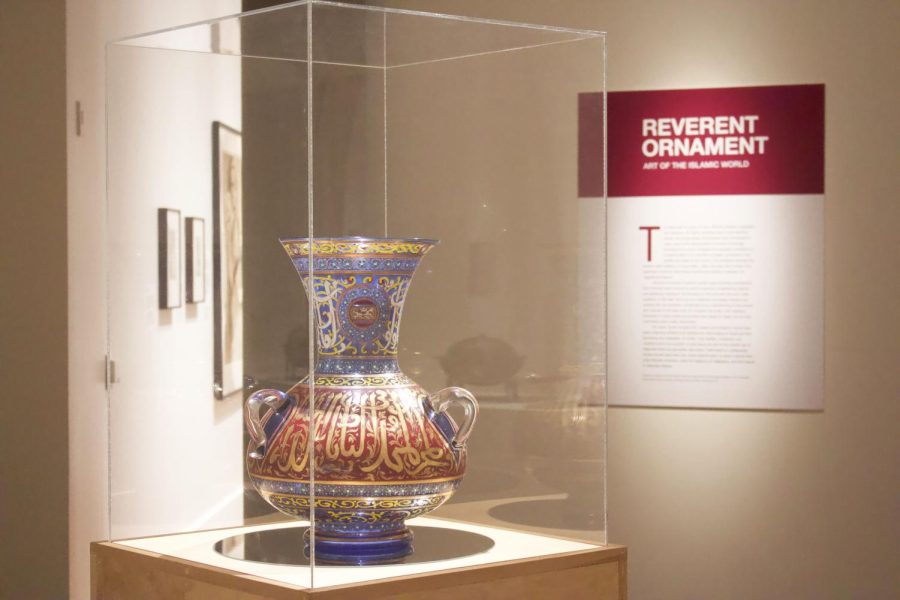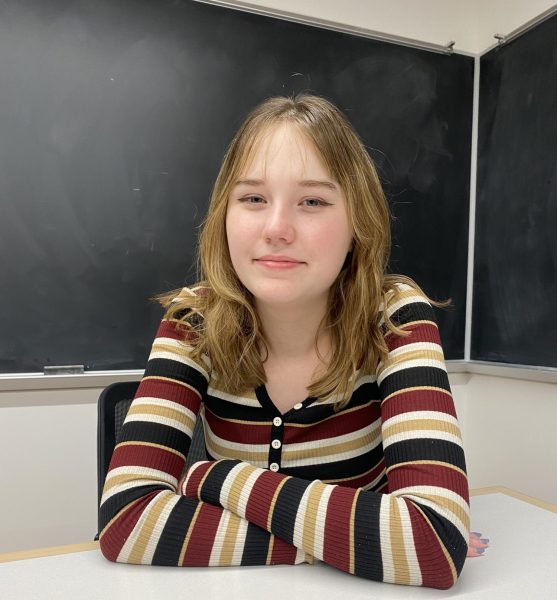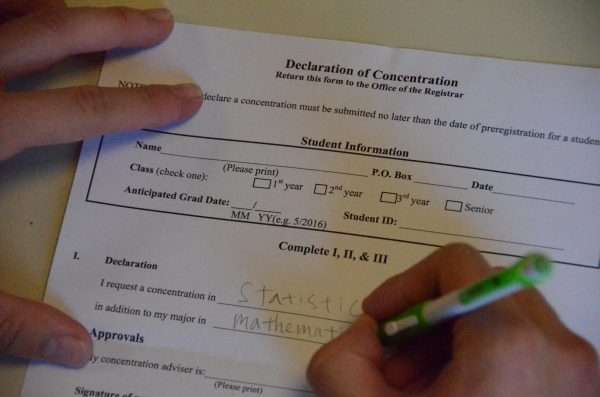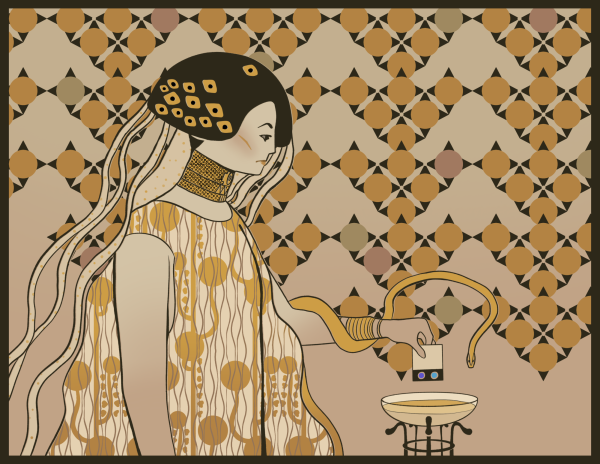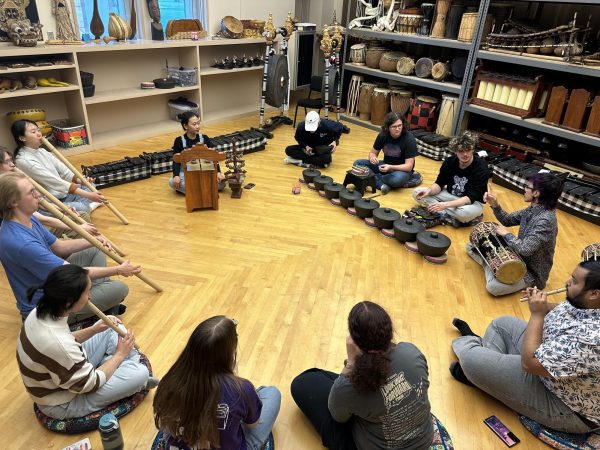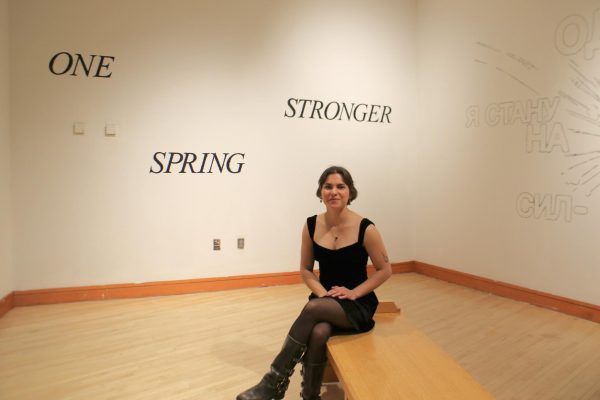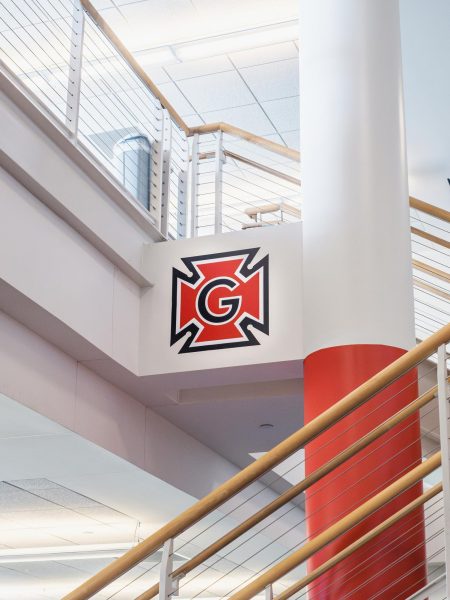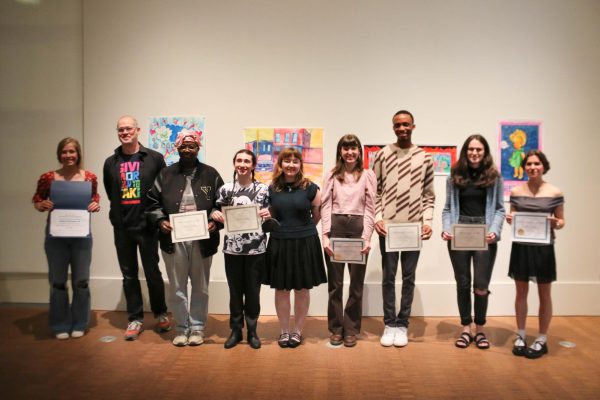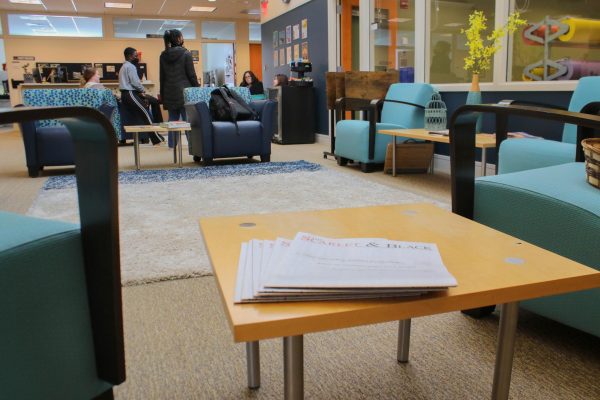“Reverent Ornament” spans nations, centuries
“Reverent Ornament” showcases “portable arts,” many of which are functional items such as glassware and rugs.
October 3, 2022
A small slice of West Asia and beyond has come to the Grinnell College Museum of Art this fall semester. “Reverent Ornament: Art from the Islamic World,” comprising 45 different pieces, has worked its way across the country, and for a short period, it will have the chance to delight Grinnell students, faculty and visitors alike. The exhibition consists of what Assistant Professor of Art History Eiren Shea calls “portable arts” – this includes rugs, paintings and ceramic pieces.
Despite being such a small exhibition, the breadth of items on display is vast. “It looks like there are objects dating from the sixth century and also the 19th century. So, a huge range and huge geographic spread,” said Shea, who went to see the exhibition herself with a class on Tuesday morning.
“Reverent Ornament” itself is a smaller selection of pieces from a much larger collection. Drs. Joseph and Omayma Touma have amassed a personal collection of over 400 individual pieces over the course of the past 30 years. The Toumas, originally from Syria, donated a large portion of their collection to the Huntington Museum of Art, in Huntington, West Virginia, in the hopes of educating museum visitors about their heritage, culture and the Near East — the transcontinental region in West Asia that was once known as the Fertile Crescent.
Now the Grinnell College Museum of Art hopes to achieve this same goal. Susan Baley, director of the Grinnell College Museum of Art, wrote in an email to the S&B, “We are especially mindful of the importance of hosting an exhibition of Islamic art at this moment, and we hope this exhibition will help visitors see similarities between cultures rather than differences.”
Displaying art from a non-Eurocentric point of view has been an integral part of many museums’s recent attempts to help solve the dominance of Western art in what is considered “high culture.”
Yet, in a move that may be controversial to some, not every piece in the exhibition hails from the Near or Middle East despite its title. Shea relayed how one of the first pieces she was met with at the exhibition was made in Europe. “If you go to the exhibition, the first thing you see is a beautiful mosque lamp, but it’s actually a vase made in 19th century France I think in imitation of a mosque lamp.”
Shea also commented on the overarching grouping of all art made in the Near East as “Islamic Art.” “It’d be like if we called all Western art made in Europe before 1900 Christian art,” she said. Shea acknowledged that while religion has played an integral role in the art of the Near East throughout the centuries, this grave oversimplification of the true creative diversity of the area has problematically colored how it is often viewed in the West.
When asked about these issues, Baley wrote, “The purpose of the exhibition, as curated by Christopher Hatten of the Huntington [Museum of Art], is to explore ‘the West’s fascination with the arts and crafts traditions of the Middle East and beyond.’ Therefore, the exhibition includes work made by Western artists that reflect this interest in the Near East. The labels accompanying the works make it clear the objects are not Islamic art. However, the works refer to Islamic culture.”
Regardless of the pieces’s national origins, “Reverent Ornament” takes a large swath of history and showcases it in an accessible, digestible way. Visitors will be able to compare mediums from all different periods and witness the crafts of Orientalist, or Western imitation, and Near East art alike. Through this exhibit, perhaps they will see just how similar the labor of creating and the labor of existing is across cultures.
“Reverent Ornament: Art from the Islamic World” opened in the Grinnell College Museum of Art on Thursday, Sept 29. It will run until Dec. 10 when it will depart to the Columbia Museum of Art in Columbia, South Carolina, and The Frick in Pittsburgh.




























































